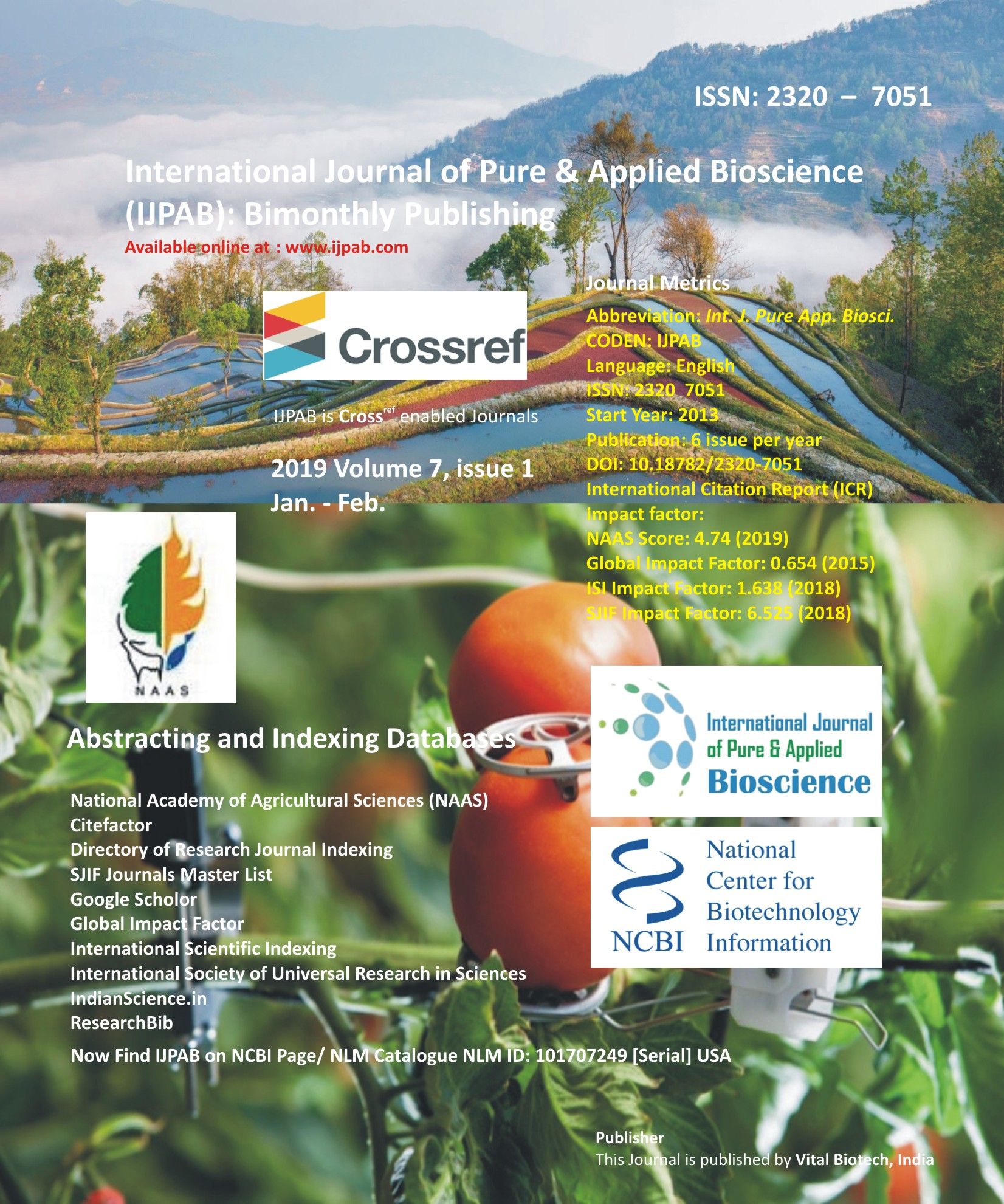
-
No. 772, Basant Vihar, Kota
Rajasthan-324009 India
-
Call Us On
+91 9784677044
-
Mail Us @
editor@ijpab.com
International Journal of Pure & Applied Bioscience (IJPAB)
Year : 2019, Volume : 7, Issue : 1
First page : (1) Last page : (13)
Article doi: : http://dx.doi.org/10.18782/2320-7051.7200
Morphological Characterization of Accessions of Okra (Abelmoschus Spp L.)
Samuel Amiteye1*, Theophilus Amitaaba2 and Harry M. Amoatey2
1Biotechnology Centre, Biotechnology and Nuclear Agricultural research Institute (BNARI),
P. O. Box AE 50, Accra, Ghana,
2Department of Nuclear Agriculture and Radiation Processing School of Nuclear and Allied Sciences,
College of Basic and Applied Sciences, University of Ghana, Accra, Ghana
*Corresponding Author E-mail: samiteye@gmail.com
Received: 3.01.2019 | Revised: 7.02.2019 | Accepted: 15.02.2019
ABSTRACT
Morphological markers are the traditionally proven and accepted tools as a first step, among a host of other techniques, for characterization of plant germplasm. The technique remains useful as a highly recommended first step to be undertaken prior to more in depth biochemical or molecular studies in okra germplasm. Ten parental accessions and 51 Fl progenies of A. esculentus and A. caillei evaluated for 15 qualitative and eight quantitative traits exhibited significant variations in all quantitative traits studied. Clustering pattern based on quantitative traits largely revealed no duplicates and clustering pattern especially among parental accessions, appears to reflect relationship based upon speciation as parental accessions belonging to A. caillei are clustered towards one end of the dendrogram, while members belonging to A. esculentus clustered towards the opposite end. Contributions of three principal components were 45.98 %, 23.31 %, and 14.46% for the first (PC1), second (PC2) and third (PC3) respectively, with corresponding Eigen values of 3.21837, 1.63171 and 1.01212 respectively, cumulating into maximum of 83.75 % of total variance. These results demonstrate possibility of producing superior hybrids of okra through artificial cross-pollination.
Key words: Okra, Accessions, Morphological, Characterization, Hybridization.
Full Text : PDF; Journal doi : http://dx.doi.org/10.18782
Cite this article: Amiteye, S., Amitaaba, T. and Amoatey, H.M., Morphological Characterization of Accessions of Okra (Abelmoschus Spp L.), Int. J. Pure App. Biosci.7(1): 1-13 (2019). doi: http://dx.doi.org/10.18782/2320-7051.7200

